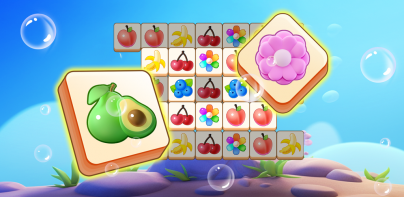








Personality Test

توضیحات Personality Test
This test is an introspective self-report questionnaire with the purpose of indicating differing psychological preferences in how people perceive the world around them and make decisions.
This kind of test was constructed by Katharine Cook Briggs and her daughter Isabel Briggs Myers.
It is based on the conceptual theory proposed by Carl Jung, who had speculated that humans experience the world using four principal psychological functions (sensation, intuition, feeling, thinking) and that one of these four functions is dominant for a person most of the time.
The theory of personality types contends that: An individual is either primarily Extraverted(E) or Introverted(I), either primarily Sensing(S) or Intuitive(N), either primarily Thinking(T) or Feeling(F), either primarily Judging(J) or Perceiving(P).
The possible combinations of the basic preferences form 16 different Personality Types.
Learning about our personality type helps us to understand why certain areas in life come easily to us, and others are more of a struggle.
Learning about other people’s personality types help us to understand the most effective way to communicate with them, and how they function best.
Practical Use
The knowledge of our and other people’s personality types help us in different areas:
Career - What types of tasks are we most suited to perform? Where are we naturally most happy?
Managing Employees - How can we best understand an employee’s natural capabilities, and where they will find the most satisfaction?
Interpersonal Relationships - How can we improve our awareness of other individuals personality type, and therefore increase our understanding of their reactions to situations, and know how to communicate with them effectively, on a level they best understand?
Education - How can we develop different teaching methods to educate different types of people effectively?
Counseling - How we can help individuals understand themselves better, and become better able to deal with their strengths and weaknesses?
این آزمون یک پرسشنامه گزارشگری درون نگرانه با هدف نشان دادن ترجیحات روانشناختی متفاوت در چگونگی درک افراد از دنیای اطراف و تصمیم گیری است.
این نوع آزمایش توسط کاترین کوک بریگز و دخترش ایزابل بریگز مایرز ساخته شد.
این براساس نظریه مفهومی ارائه شده توسط کارل یونگ است ، که گمانه زنی کرده است که انسانها جهان را با استفاده از چهار کارکرد اصلی روانشناختی (احساس ، شهود ، احساس ، تفکر) تجربه می کنند و یکی از این چهار عملکرد غالب است. بیشتر اوقات برای یک شخص
نظریه انواع شخصیت ادعا می کند که: فرد یا در اصل برون گرا (E) یا درون گرا (I) است ، یا در درجه اول سنجش (S) یا شهود (N) ، یا در درجه اول فکر (T) یا احساس. (F) ، یا در درجه اول داوری (J) یا درک (P).
ترکیبات احتمالی ترجیحات اساسی 16 نوع شخصیت مختلف را تشکیل می دهد.
یادگیری در مورد نوع شخصیتی ما به ما کمک می کند تا درک کنیم که چرا مناطق خاصی از زندگی به راحتی به ما می آیند ، و دیگران بیشتر درگیر مبارزه هستند.
آگاهی از انواع شخصیت دیگران به ما کمک می کند تا موثرترین راه برقراری ارتباط با آنها و نحوه عملکرد آنها را بهتر درک کنیم.
استفاده عملی
آگاهی از انواع شخصیت ما و افراد دیگر در زمینه های مختلف به ما کمک می کند:
شغل - چه نوع کارهایی را که ما برای انجام آنها مناسب تر هستیم؟ از کجا ما به طور طبیعی خوشحال تر هستیم؟
مدیریت کارمندان - چگونه می توانیم به بهترین وجه از تواناییهای طبیعی یک کارمند بفهمیم ، و آنها بیشترین رضایت را از کجا می یابند؟
روابط بین فردی - چگونه می توانیم آگاهی خود را نسبت به نوع شخصیت افراد دیگر بهبود بخشیم ، و بنابراین درک خود را از واکنش آنها به موقعیت ها افزایش می دهیم ، و می دانیم چگونه با آنها ارتباط برقرار کنیم ، در سطحی که آنها به بهترین شکل درک می کنند؟
آموزش - چگونه می توانیم روشهای مختلف تدریس را برای آموزش افراد مختلف به طور مؤثر ایجاد کنیم؟
مشاوره - چگونه می توانیم به افراد کمک کنیم تا خود را بهتر بشناسند و بتوانند با نقاط قوت و ضعف خود مقابله کنند؟



























